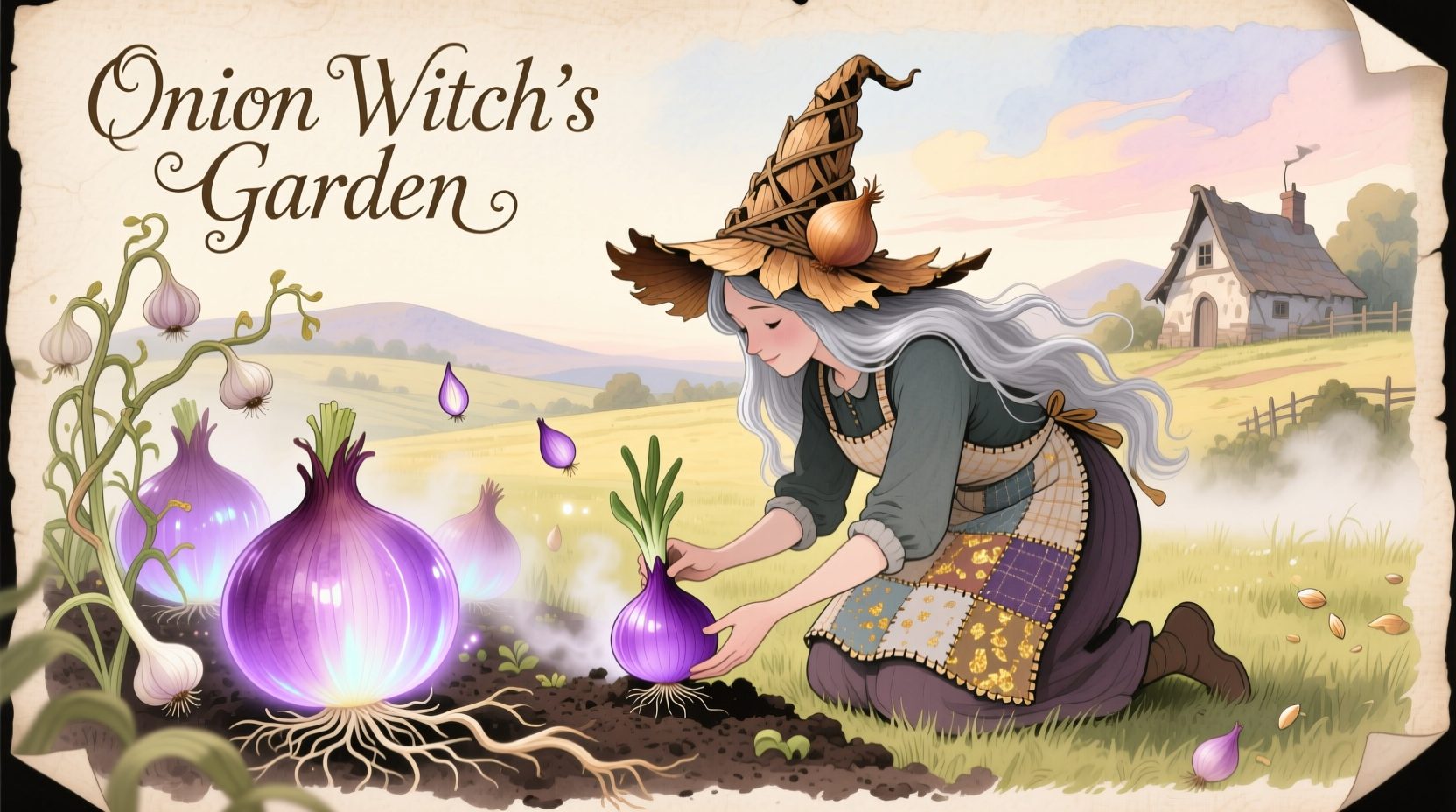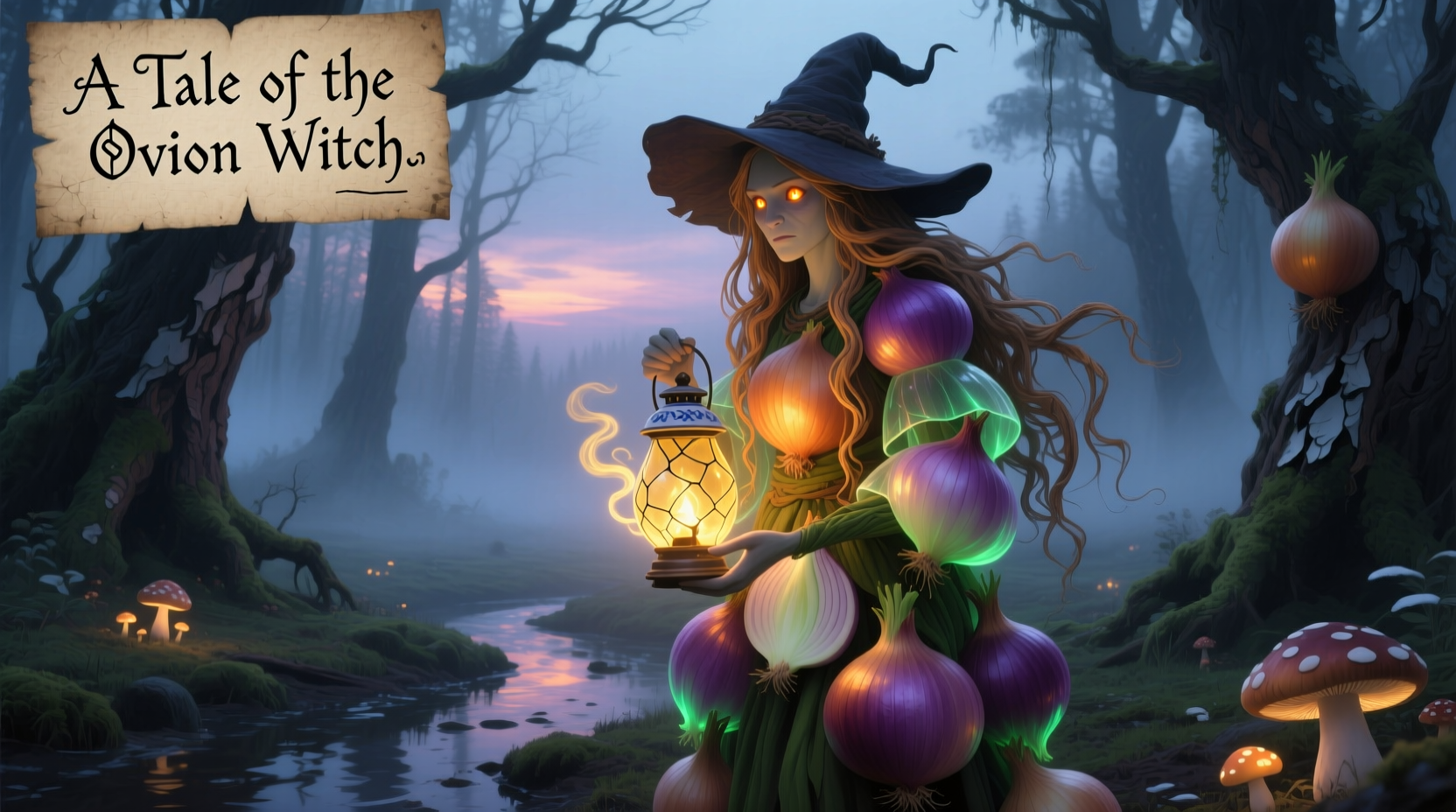"A Tale of an Onion Witch" refers to a lesser-known but culturally significant European folk narrative that emerged in 17th-century Germanic regions, where onions symbolized protection against evil spirits and represented feminine wisdom in agricultural communities. Unlike mainstream fairy tales, this story centers on an elderly woman's relationship with onions—not as a villain but as a guardian of culinary and spiritual knowledge passed through generations.
The Historical Roots of Onion Folklore
Onions have carried symbolic meaning across civilizations for millennia. Ancient Egyptians buried them with pharaohs as symbols of eternity, while medieval European peasants hung braided onions above doorways to ward off illness. The "onion witch" narrative specifically evolved in Germanic farming communities where women managed kitchen gardens. Historical records from Bavarian archives (1682) document "Zwiebelhexe" (onion witch) as a term of respect for elder women who preserved seed varieties and shared harvest wisdom.
| Era | Cultural Context | Onion Symbolism |
|---|---|---|
| Ancient Egypt (3000 BCE) | Burial rituals | Eternity (layered structure) |
| Medieval Europe (500-1500 CE) | Peasant households | Protection against plague |
| Early Modern Germany (1600s) | Rural farming communities | Women's agricultural knowledge |
| Contemporary Interpretations | Culinary heritage movements | Sustainability and food sovereignty |
Decoding the Narrative Structure
The most documented version, collected by folklorist Jacob Grimm in 1816, follows a consistent pattern: A village faces crop failure, villagers blame an elderly woman growing unusual onion varieties, she demonstrates how her "magic" onions heal the land through crop rotation principles. Modern scholars recognize this as oral transmission of agricultural science—what we'd now call sustainable farming practices.
Unlike typical witch narratives, the onion witch character possesses no supernatural powers. Her "magic" consists of practical knowledge: understanding soil chemistry through onion growth patterns, preserving heirloom seeds, and using onion skins for natural dyes. This distinction makes the tale particularly valuable for studying how pre-scientific communities encoded agricultural wisdom in storytelling.

Regional Variations and Cultural Adaptations
The story's core elements shift meaningfully across regions, revealing local agricultural priorities:
- Germanic versions: Focus on onion varieties as indicators of soil health
- Slavic adaptations: Incorporate onion braids as protective talismans
- Scandinavian retellings: Emphasize winter storage techniques through "onion vaults"
These variations aren't random—they directly correspond to regional farming challenges documented in agricultural histories. For instance, the Slavic emphasis on braiding reflects documented practices in 18th-century Polish villages where onion storage determined winter survival rates (National Museum of Agriculture, Warsaw records).
Why This Tale Matters Today
Contemporary chefs and food historians are rediscovering "A Tale of an Onion Witch" for its insights into sustainable practices. The narrative's emphasis on seed preservation directly informs modern heirloom vegetable movements. When chef Dan Barber featured onion witch symbolism in his 2022 seed-saving initiative, he noted how the story "makes agricultural science emotionally resonant."
For home cooks, understanding this folklore transforms onion preparation: recognizing that the discarded skins contain valuable nutrients, appreciating how different varieties suit specific cooking methods, and honoring the agricultural knowledge embedded in everyday ingredients. This perspective shift—from seeing onions as mere ingredients to recognizing them as carriers of cultural wisdom—enriches culinary practice beyond recipes.
Practical Applications for Modern Cooks
Connecting with this tradition doesn't require believing in witches—it means adopting practices that honor the story's wisdom:
- Preserve heirloom varieties: Grow 'Red Baron' or 'Ailsa Craig' onions to continue seed-saving traditions
- Use the whole plant: Make broth from onion skins (rich in quercetin) as historical communities did
- Practice crop rotation: Follow the tale's agricultural wisdom by rotating onion beds annually
- Share knowledge: Document family onion-growing techniques as oral history preservation
These actions transform cooking from mechanical preparation to cultural participation—exactly what the original storytellers intended when they crafted "A Tale of an Onion Witch" centuries ago.











 浙公网安备
33010002000092号
浙公网安备
33010002000092号 浙B2-20120091-4
浙B2-20120091-4